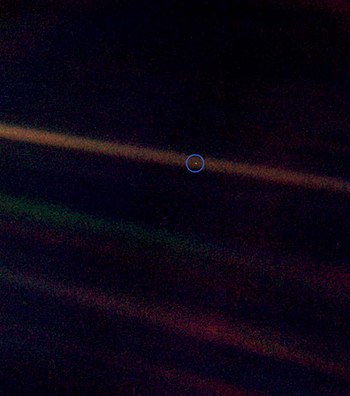Moving right along, let's talk about The Ghost Brigades shall we? (If you're lost, I talked about Old Man's War previously, this is the second book in a trilogy by John Scalzi.)
This is going to be the most difficult book in the trilogy to discuss without spoilers. The thing is, this book is about some special units in the Colonial Defense Forces (CDF) that are known as the Ghost Brigades. But the telling you the thing that makes the Ghost Brigages special is a spoiler for Old Man's War. In fact, I think I'm going to give up. If you haven't read Old Man's War and you care about spoilers stop reading now. If you've read OMW, but you haven't read TGB, that's OK. I'll avoid spoiling the second book.
Are they gone yet?
OK, if you're still reading then you have either read Old Man's War or you don't care about spoilers. So let me recap for the latter group. In Old Man's War we learn that the CDF knows how to transfer minds. So basically when somebody turns 65 on Earth they can sign up to enlist and ten years, and give CDF a DNA sample. Unknown to the Earthlings the CDF uses this sample to grow a special body that is based on the original DNA but also has superhuman reflexes, speed, super-blood and so forth. The body also comes with a built-in computer/communicator/PDA (called a BrainPal) with a direct brain link.
Well, some people die before turning 75 or fail to enlist - leaving the CDF with an expensive body and no personality/mind to imprint in it. These bodies are given artificial personalities and enlisted in the Ghost Brigades. They are human, more or less, but they rely much heavier on the BrainPal than normal humans do. They are "born" with full-grown bodies, and they always have the BrainPal interface - so they have access to encyclopedias worth of information at the first moment they awake. Furthermore, they communicate mostly via BrainPal - much faster than normal speech and they can even send some emotional content, making them quasi-telepathic with their squadmates.
We learned all that in Old Man's War, but what does that leave for The Ghost Brigades? Well, Old Man's War tells the story of a regular inductee. He learns about the Ghost Brigades, but it's not really the focus of the story. In TGB we follow other characters - including a newly "born" soldier. So where OMW tells the reader about the CDF basic training, this book follows through the Special Forces training. The book is a little more contemplative than OMW, but there's still plenty of fighting and action.
I griped a little about info-dumping in the OMW review, and it's worse in this book. It's not a major flaw, but there's even more "Here's a big blurb about some background thing that we all need to know here." There's no literal "As you know Bob", but it comes damn close, and there are several "As you now-need-to-know Bob, here is <big blob of classified data>." moments. I said it didn't cross the line to bother me in OMW, but this one did bother me in several places.
The very nature of the Ghost Brigades leads into some contemplation about humanity. Are the Ghost Brigade members actually human? They don't have their own DNA, they don't have a childhood, and they can barely stand to talk to the "Realborn" who insist on using verbal speech communication speeds. What if the bodies they are given are even less human. Is there a threshold where on this line you have a human and on this line you have a new sapient species? It's interesting stuff, and having on a narrator on the inside lets Scalzi explore it.
Furthermore the Realborn use the Ghost Brigades as Special Forces, but it also means the Ghost Brigades are sent in for all the dirty work. The CDF is a volunteer force, but these people were created. What if they don't want to serve? Can they quit? Are they full members of society, or are they second class citizens?
The book also sketches in some more about the political structure of the Colonial Union, although this aspect of the book is less satisfying. I had questions already from OMW, and TGB opens more questions than it closes. Furthermore OMW is a reasonable stand-alone read. The ending of TGB is definitely setting up the third book.
All in all I enjoyed reading The Ghost Brigades, but it's my least favorite of the three books in the universe. Part of that is normal "second part of the trilogy" blues, and part of that is it's much more difficult to identify with a member of the Ghost Brigade. John Perry narrates OMW and The Last Colony (the third book), but he's not even ever "on-screen" in TGB. Nor does it follow Jane Sagan (although she is a major character in the book), instead following a brand-new soldier.
technorati tags:JohnScalzi, TheGhostBrigades, OldMan'sWar, BookReview, ScienceFiction
Blogged with Flock
